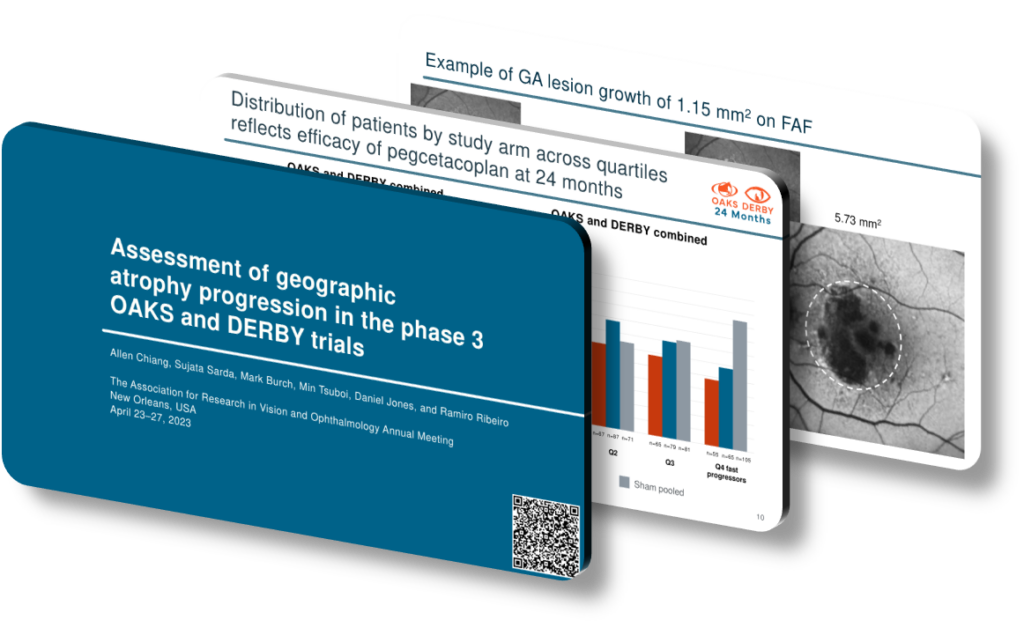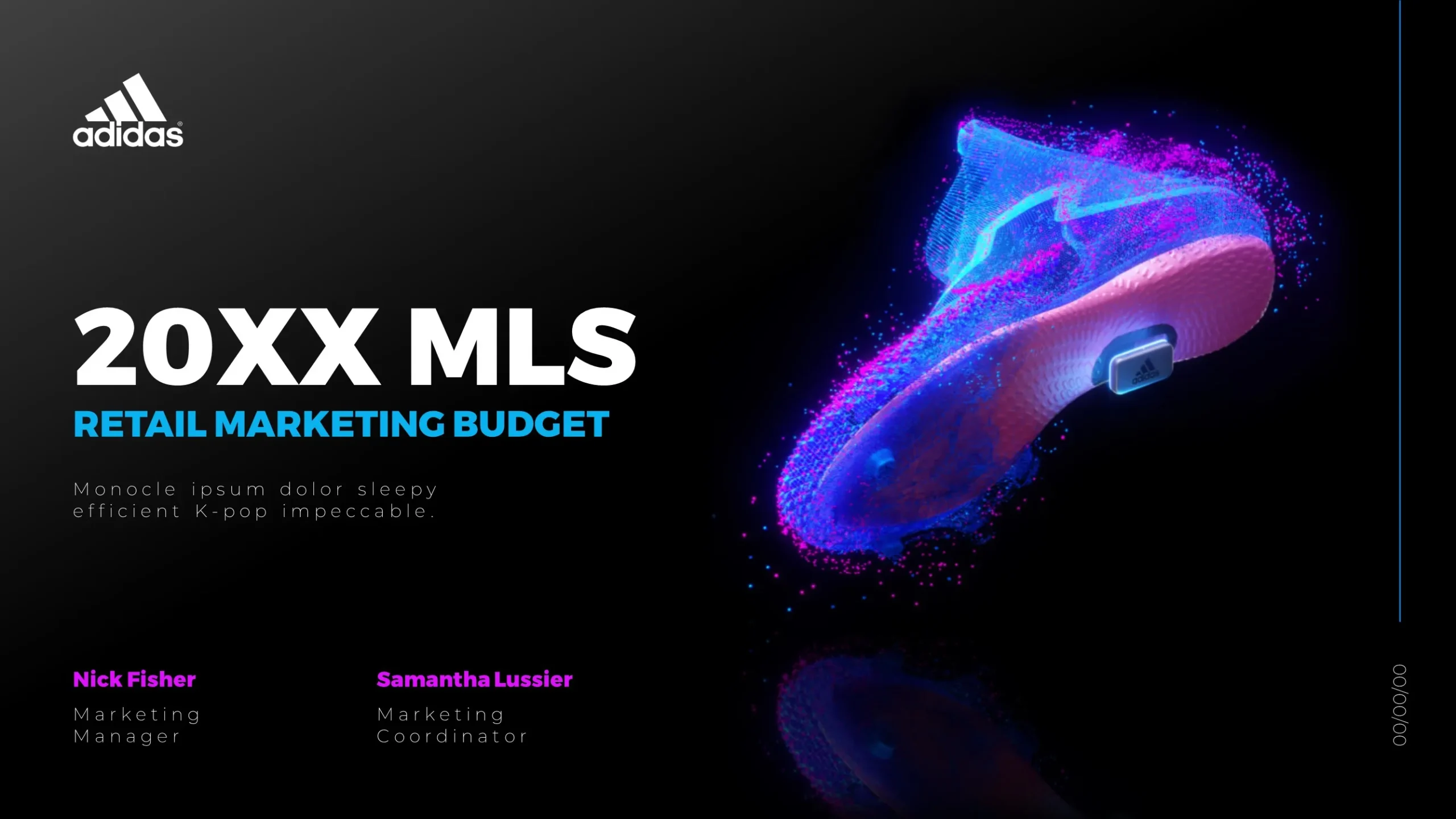

Exemplary Design and Structure of the Presentation
The presentation was meticulously structured to convey complex clinical data in a clear, impactful manner. The layout prioritized a logical flow, beginning with a succinct introduction to the challenges posed by GA and AMD. This was followed by a detailed explanation of trial methodologies, results, and their implications.
Key findings were highlighted using visually engaging charts and graphs, which allowed for an intuitive understanding of the data. This strategic use of visuals was instrumental in emphasizing the significant differences in GA progression between the pegcetacoplan treatment groups and the sham group.
Visuals Enhancing Understanding
High-quality visuals played a pivotal role in the presentation. Graphs depicting the rate of GA lesion growth clearly demonstrated the efficacy of monthly and every-other-month administrations of pegcetacoplan. Additionally, images showcasing the preservation of retinal tissue and retinal pigment epithelium (RPE) cells vividly illustrated the treatment’s protective effects on ocular structures.
These visuals were not only aesthetically pleasing but also served to reinforce the verbal messages, facilitating a deeper understanding of the treatment’s benefits.
Impactful Messaging and Core Content
The core message of the presentation was the remarkable efficacy of pegcetacoplan in slowing GA progression. The trials revealed that pegcetacoplan significantly decelerated the development of GA lesions compared to a sham treatment, with benefits that increased over time and were most pronounced between months 18 and 24.
Moreover, the treatment was associated with the preservation of vital retinal tissues and RPE cells, which are crucial for sustaining visual function. This preservation translated into enhanced quality of life for patients, particularly those with lesions located further from the foveal center.
Significance of the Findings
Pegcetacoplan stands as the first FDA-approved treatment for GA secondary to AMD, marking a milestone in ophthalmic care. The trials demonstrated consistent benefits across various subgroups, indicating a broad applicability of this therapeutic option.
Quartile analysis further supported the efficacy of pegcetacoplan, showing a higher proportion of slow progressors in the treatment arms. These results underscore the potential of pegcetacoplan to transform the management of GA, improving both visual outcomes and patient quality of life.
Conclusion
In summary, the presentation at the Association for Research in Vision and Ophthalmology Annual Meeting effectively communicated the transformative potential of pegcetacoplan. Through strategic design, compelling visuals, and clear messaging, the presentation highlighted the drug’s significant impact on GA progression, retinal health, and overall patient well-being. This breakthrough offers renewed hope for individuals affected by GA secondary to AMD, paving the way for improved therapeutic strategies in ophthalmology.









